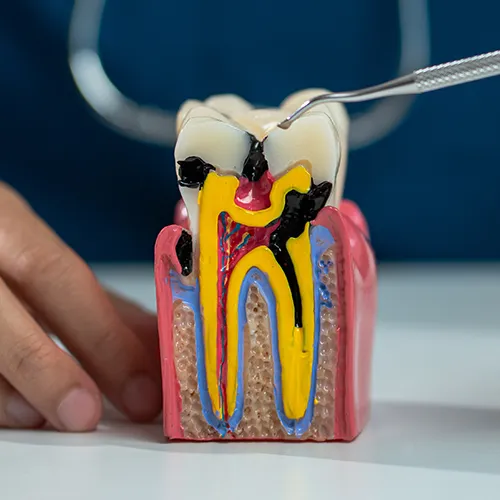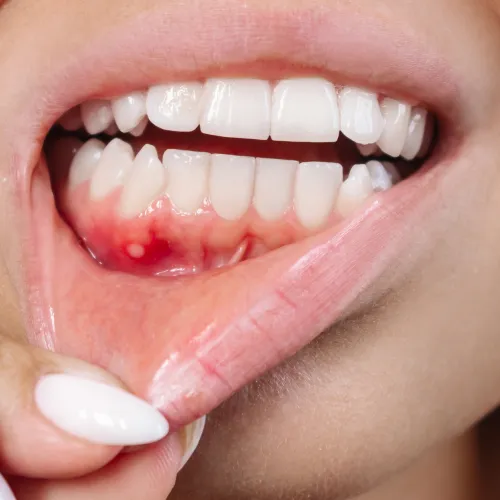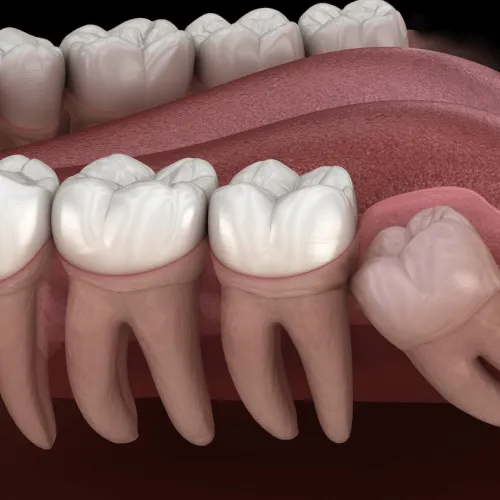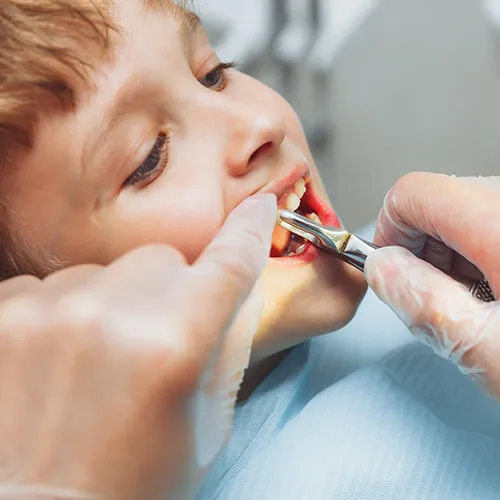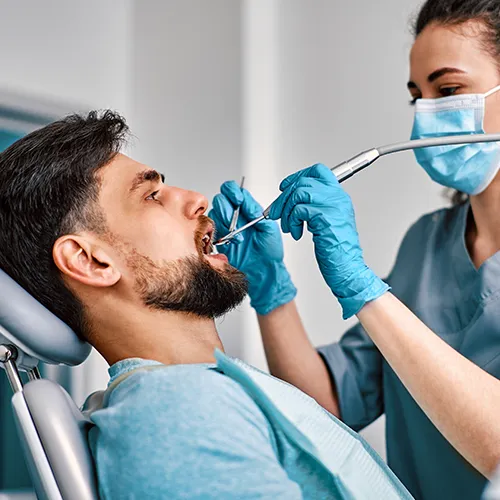General Dentistry
How Gross Debridement Revives Your Smile
You brush, you floss, you even swish a little mouth-wash between meetings, yet stubborn tartar still finds a way to set up camp along your gumline. Over time, that hardened buildup acts like armor for bacteria, blocking the dentist’s instruments and hiding early signs of trouble. When a routine cleaning can’t break through the wall, your teeth need a bigger reset button: gross debridement. Think of it as clearing the overgrown brush before landscaping begins. In this article we will unpack what happens during gross debridement, why it is different from other cleanings, how it protects your long-term oral health, and what you can expect before, during, and after the procedure. By the end you will know exactly why dentists reach for this powerful first step, and why your mouth feels amazingly lighter once it is done.
Why Plaque Hardens Into a Problem
Dental plaque starts as a sticky biofilm that forms within hours after brushing. When it is not fully removed, minerals in your saliva turn portions of that soft film into calcified deposits called calculus or tartar. Tartar can form above the gumline (supragingival) or creep below it (subgingival), clinging tightly to the root surface. Once the mineral barrier locks in, toothbrush bristles and standard hygiene tools simply skate across it. The longer tartar sits, the more bacteria it shelters. These microbes release toxins that inflame the gums, deepen pockets, and may eventually erode supporting bone. If your first visit in years reveals thick, widespread calculus, your dentist cannot immediately chart gum pockets or assess decay because the view is blocked. Conventional prophylaxis would barely scratch the surface, literally. Gross debridement clears the way so more detailed diagnostics and treatment can follow.
What Exactly Happens During Gross Debridement?
At Prestige Dental, the procedure begins with a thorough visual exam and, if necessary, X-rays to map out where tartar has taken hold. Your hygienist then uses power-driven ultrasonic scalers and hand instruments designed to fracture and strip away bulky calculus quickly. The ultrasonic tip vibrates at high frequency, spraying a cooling mist that also flushes loose debris. Hand scalers follow to fine-tune areas the tip cannot reach. Because the goal is rapid bulk removal rather than final polishing, instruments work just above and slightly below the gumline, freeing both visible and hidden deposits. The session can take from 30 minutes to over an hour, depending on buildup. Topical anesthetic gel is available for sensitive spots, and many patients are surprised at how comfortable modern equipment feels.
Once the “big stuff” is gone, your gums finally breathe and tighten. The dentist can now accurately probe pocket depths, check for cavities, and create a tailored periodontal or prophylactic plan, often scheduled as a separate visit.
Is a full mouth debridement the same as a deep cleaning?
Short answer: they are related but not identical. A gross (full mouth) debridement is an initial, broad sweep to remove heavy calculus and plaque that obstruct a complete examination. A deep cleaning, more accurately called scaling and root planing (SRP), is a follow-up therapy that targets bacterial toxins along root surfaces inside periodontal pockets. SRP smooths the roots so gums can reattach and heal. While gross debridement may cover all tooth surfaces above and just under the gumline, a deep cleaning is meticulous and pocket-specific. In many cases gross debridement sets the stage for SRP, but if your gums respond well and pockets are shallow, a standard preventive cleaning may be all that is needed next.
Is a full mouth debridement painful?
Most patients report little to no pain, just an odd “scraping” vibration that feels more like pressure. Ultrasonic devices do the heavy lifting, so less force is required. Topical numbing gel further tames sensitive spots, and local anesthesia is available if discomfort arises. You might notice mild soreness or gum tenderness for a day or two afterward, similar to what you feel after a vigorous floss session when it has been a while. Rinsing with warm salt water and sticking to soft foods for the first evening usually handles it.
Is full mouth debridement necessary?
Dentists do not recommend gross debridement casually. It is necessary when thick, stubborn tartar prevents an accurate diagnosis or hinders effective cleaning. Skipping this step risks hidden cavities, misjudged gum health, and incomplete removal of infection-causing bacteria. Even if your teeth do not hurt now, untreated calculus can accelerate gum disease, loosen teeth, and affect systemic health. Investing in debridement today prevents costlier interventions later and restores a clean foundation for ongoing preventive care.
How to Know You Might Need One
- It has been more than a year since your last cleaning. The longer plaque sits undisturbed, the more likely it calcifies.
- You see or feel hard, yellow-brown deposits especially behind lower front teeth or along molars.
- Your gums bleed easily when brushing or flossing, signaling inflammation.
- A hygienist tells you they cannot see or measure pockets clearly due to buildup.
- You smoke or vape. Nicotine alters saliva flow, encouraging stubborn calculus.
If any of these sound familiar, schedule an assessment at Prestige Dental. Our team will let you know whether a standard cleaning will suffice or a gross debridement is advisable first.
The Benefits Go Beyond Sparkle
- Accurate diagnostics – Removing calculus exposes tooth surfaces and gum pockets so your dentist can detect early decay, fractures, and bone loss.
- Reduced bacterial load – Disrupting the tartar fortress lowers inflammatory bacteria linked to heart disease, diabetes complications, and respiratory issues.
- Fresher breath – Calculus traps odor-producing compounds; eliminating it cuts halitosis at its source.
- Better gum healing – Gums reattach more readily when roots are free of hard deposits.
- Easier home care – Smooth surfaces mean toothbrush bristles and floss glide effortlessly, preventing rapid buildup.
Prevention: Keeping Tartar From Making a Comeback
- Brush twice daily for two full minutes with fluoride toothpaste.
- Angle your bristles at 45 degrees toward the gumline to sweep away plaque before it hardens.
- Floss or use interdental brushes nightly. These reach the tight spots a toothbrush misses.
- Rinse with an antimicrobial mouth-wash to reduce bacterial load.
- Limit sugary snacks and acidic drinks, which fuel plaque formation.
- Schedule biannual checkups so any small deposits are removed before they turn into armor.
Putting It All Together
Gross debridement is not just an extra-thorough cleaning; it is the essential first move when plaque and tartar have had too much freedom. By stripping away thick deposits, your dentist gains a clear view of your oral landscape and can act early against disease. The procedure is comfortable, efficient, and delivers immediate freshness you will feel every time you run your tongue along your teeth.
Ready for a Fresh Start?
If you suspect stubborn tartar is hiding trouble or it has been a while since your last professional cleaning, schedule an appointment with Prestige Dental today. Our compassionate team will evaluate your needs, discuss whether gross debridement is right for you, and put you on the path toward healthier gums and a brighter, more confident smile. Call us or book online, your mouth will thank you.


